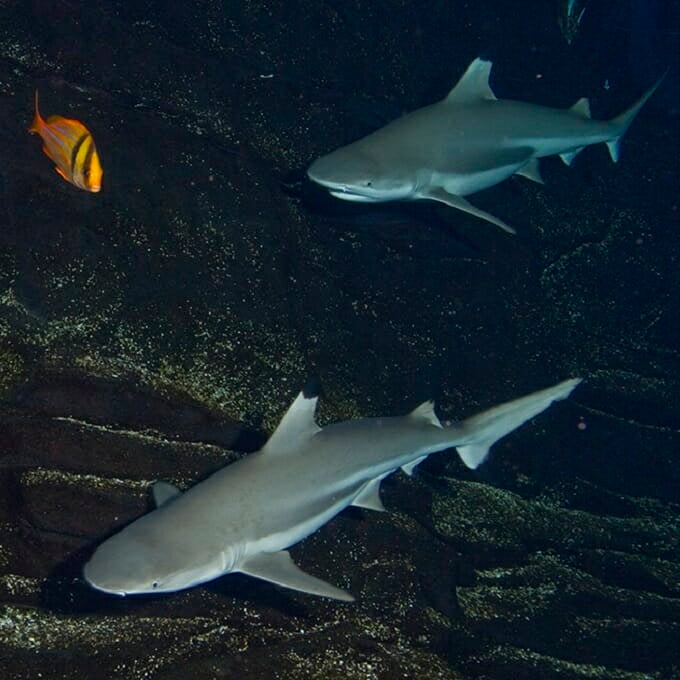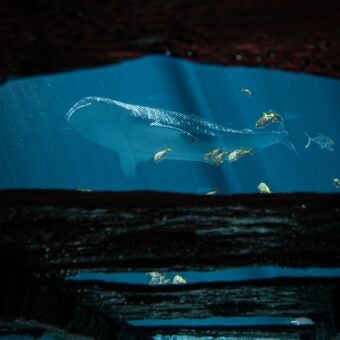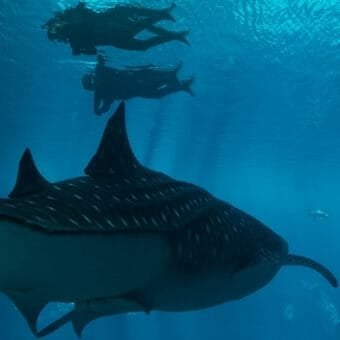-
Size
7 feet (2m) -
Diet
Fish, crustaceans and mollusks -
Range
Indo-Pacific -
Habitat
Coral reefs, intertidal zone and near reef drop-offs
Physical Characteristics
- The blacktip reef shark reaches a maximum size of 7 feet (2m).
- A smaller shark with a rounded snout and distinct black-tipped fins.
- The blacktip reef shark exhibits counter-shading, being gray to gray-brown on the upper body and white ventrally.
- Also displays a conspicuous white band on its flanks, which extends back to the pelvic fins.
Animal Fact
The blacktip reef shark is often seen cruising just below the surface, with only its dorsal fin showing above.
Diet / Feeding
- The blacktip reef shark prefers fish, but also feeds on crustaceans, cephalopods and other mollusks.
- Common prey includes surgeonfish and mullet. In inshore mangrove areas, this shark will also consume snakes.
- Has long, thin, serrated teeth, which help in eating reef fish.
Range / Habitat
- Occurs in the Indo-Pacific from the Red Sea and East Africa to the Hawaiian Islands and French Polynesia. It also has moved into the eastern Mediterranean through the Suez Canal.
- Found in shallow inshore waters on coral reefs, in the intertidal zone (reef flats) and near reef drop-offs. Also found in mangrove areas, moving in and out with the tide. Has been observed in freshwater, but not in tropical lakes and rivers far from the sea.
Reproduction & Growth
- Female blacktip reef sharks produce two to four pups, usually measuring around 1.5ft (46cm), after an 8-16-month gestation period, which is thought to vary due to water temperature.
Conservation Status
- “Vulnerable” on the IUCN Red List.
Additional Information
- This shark cruises in very shallow water with its dorsal (top) fin often extending above the surface. It has been known at times to jump completely out of the water while in the shallows.
- Blacktip reef sharks may become aggressive in areas where spearfishing is common.
- They are regularly caught by inshore fisheries and are vulnerable to depletion because of their small litter size and long gestation period. They are generally sold as fillets but their fins are valued for shark-fin soup and the liver is a source of oil.
- This species is found singly or in small groups.
- Blacktip reef sharks are not to be confused with the blacktip shark, which is a different species.
Sources
- www.fishbase.org
- www.flmnh.edu
- Sharks and Rays. Hennemann, R. M., pg. 144



